
Our life comprises so many day-to-day activities, be it eating our breakfast, to climbing down stairs from our house, to riding a vehicle, to working out in the gym or say, even sleeping. Every physical activity or work that we do requires expansion and contraction. Hence, all the physical work that is carried out from our birth until the day we die is done with the help of our Bones. At birth, an infant’s body consists of 270 Bones, but as the infant grows, many of the Bones fuse together and by the time the child grows up to be an adult, it leaves a total of 206 separate Bones.
The structure of the body and all the ligaments are the Bones. Bones protect, move and support the organs of our body. Bones are made of a protein known as collagen, calcium and minerals.
Bone is a rigid organ and a living tissue that makes up the body’s skeleton. The Bone has a compact tissue on the outside, which is dense and thick, whereas it has a cancellous tissue on the inside that is sponge and in the middle is Bone marrow.
The types of tissues found in the Bones are osseous tissue, marrow, nerves, blood vessel, cartilage, periosteum and endosteum.
Our Bones have eleven main functions, which can be categorised into mechanical functions, synthetic functions and metabolic functions.
Mechanical functions of the Bones are as follows:
-
Protection: Bones serve to protect several organs inside our body. The important as well as the delicate organs of our body are protected by the Bones. The best example is our brain which is protected by the skull and the heart which is protected by the ribcage.
-
Shape: The human body has a rigid shape, so the Bones provide a framework around the body which keeps the body supported. Bones are mainly responsible for the form and shape of the human body
-
Movement: Our Bones, joints, ligaments, tendons and the skeletal muscles work together to generate and transfer forces, due to which each individual body part can be manipulated in a three-dimensional space. Our Bones form a moving machinery by acting as a lever, due to which the force generated from the skeletal muscles works in a beneficial way.
-
Sound transduction: Bones play a major role in the mechanical aspect of overshadowed hearing.
-
Blood production: The major role of the Bones is to produce blood cells. The Bones are incapable of producing the blood cells, but the Bone marrow contains Hematopoietic stem cells that are capable of producing the blood cells.
Following are the synthetic functions of the Bones:
Metabolic functions of the Bones:
-
Mineral storage: The important minerals like calcium and phosphorus which are essential for our body are stored in the Bones.
-
Growth factor storage: The mineralised Bones in our body store important growth facts such as insulin.
-
Fat storage: The yellow Bone marrow of the long Bones serves as a storage of fats.
-
Role in acid-base balance: The Bones buffer the blood against excess pH changes by absorbing or releasing alkaline salts.
-
Detoxification: The Bone tissues store foreign elements as well as heavy metals. The Bones further remove them from the blood, thus preventing and reducing their effects on other tissues.
-
Endocrine organ: The Bones release fibroblast growth factor -23 which in turn helps in controlling phosphate metabolism, which acts on the kidneys to reduce phosphate re-absorption. A hormone called osteocalcin is also released by the Bone cells that regulate the blood sugar and fat deposition. The insulin secretion and sensitivity is also increased by the osteocalcin.
The Bones consist of cellular and molecular structure which are mentioned below:
The cellular structure comprises:
-
Osteoblasts
-
Osteocytes
-
Osteoclasts
The molecular structure of the Bone comprises:
-
Matrix
-
Inorganic
-
Organic
The human Bones are classified on different basis.
Types of Bone on the basis of shape:
-
Long Bones: The long Bones have an elongated shaft and two expanded ends on both the sides of the shaft. The start of the shaft is known as diaphysis and the ends of the shaft are known as epiphyses. The epiphyses are basically smooth and articular. The shaft also consists of a central medullary cavity in which the Bone marrow is situated.
The long Bones of the human body are further divided into three categories:

Typical long Bones: The typical long Bones have an elongated shaft and two ends. They are represented by Bones like fibula, tibia, ulna, radius, femur and humerus.
Miniature long Bones: The miniature long Bones have a smaller appearance and they have only one epiphysis. The best example of miniature long Bones are metacarpal, metatarsals and the phalanges that are situated at both upper and the lower limbs.
Modified long Bones: The modified long Bones either have a modified shaft or a modified end. There is no medullary cavity present in these types of Bones. The best example for these Bones is clavicle, which is present in our collar Bone.
Short Bones: The short Bones of the human body do not have a fixed shape and are usually short in posture. Majority of the short Bones are named according to their shape. The best example of short Bones is cuboid, cuneiform, scaphoid and trapezoid. Even all the carpal and tarsal Bones are included in short Bones.
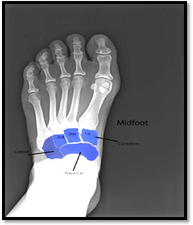
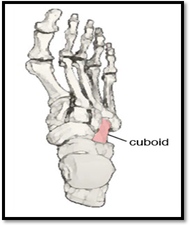

-
Flat Bones: The flat Bones in the human body are flat in shape and in appearance. They basically have two important surfaces. They are similar to shallow plates and they also comprise boundaries of some body cavities. They best examples of the flat Bones are scapula, ribs and sternum.
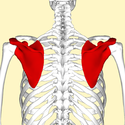
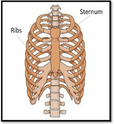
-
Irregular Bones: The irregular Bones of the human body are irregular in shape so they do not come in any category. The best example for irregular Bones is the hip Bone and the Bones that are present in the base of our skull.
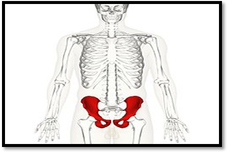
-
Sesamoid Bones: The sesamoid Bones are unlike the other types of Bones as they are in the form of nodules embedded in tendons as well as the joint capsules. The best example for sesamoid Bones is patella, fabella and pisiform.
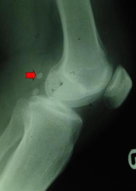
-
Membranous Bones: The membranous Bones are also known as the dermal Bones. The process by which they turn into Bones is called intra-membranous ossification. The best examples for membranous Bones are the Bones of skull and the facial Bones.
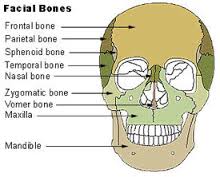
-
Cartilaginous Bones: The cartilaginous Bones turn from a cartilage model and this type of ossification (turn into Bone or bony tissue) is also known as intra-cartilaginous ossification. The best example for cartilaginous Bones is the Bones of limbs and the vertebral column.

-
Membro-cartilagnious Bones: The membro-cartilaginous Bones ossify from the cartilage and partly from the mesenchymal condensation (Mesodermal tissue that forms connective tissue, blood and muscles). The common examples for membro-cartilagnious Bones are temporal, clavicle (collar Bone), mandible (jaw Bone) and sphenoid Bones.
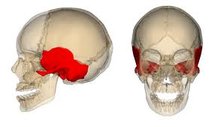
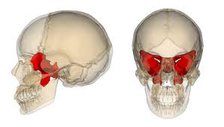
Temporal Bone Sphenoid Bone
Bones of the axial skeleton: These Bones basically form an axial skeleton of the human body. The example is Bone of vertebral column, thoracic cage and the skull.
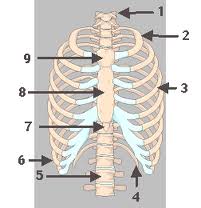
Bones of appendicular skeleton: These Bones basically form the appendicular skeleton of the body. The examples of this type of Bone are the Bone of limbs and girdles of limbs.
All the Bones in the human body are made up of the same material. The only known difference is the pattern of the arrangement of Bones. The structural classification of the Bones has two approaches – macroscopic approach and microscopic approach.
Macroscopic approach further divided the Bones into two categories:
Compact Bone: The part of the Bone where there is a lot of Bone tissue and less empty space is known as the compact Bone.
Spongy Bone: The part of the Bone where there is more of empty space and less Bone tissue is known as the spongy Bone.
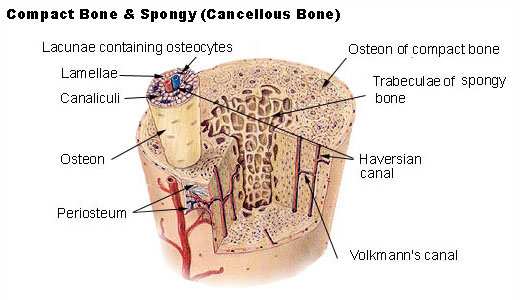
Microscopic approach also further divides the Bones in two categories:
Lamellar Bone: Lamellar Bones are composed of thin plates of the Bone tissues and most of the adult human Bones are lamellar Bones.
Fibrous Bone: The fibrous Bones have more fibers in them and in humans they are only found in the fetus.
Fracture: The breakage of a Bone, the breakage can be complete or incomplete. The types of fracture are:
Simple: Clean breakage of the Bone with little or no break in the skin above.
Impacted fracture: In this type of fracture, the Bones involved are driven into each other.
Comminuted fracture: In this type of fracture, the Bones are broken into more than two pieces
Complicated fracture: In this type of fracture, the broken Bone involves damage to the other organs
Kyphosis: Hunching of the back
Lordosis: Inward curvature of the spine
Scoliosis: Sideways deviation of the spine
Arthritis: One or more joints are inflamed
Bone Cancer: It may occur as a secondary cancer
Osteoporosis: The loss of Bone tissue which can lead to increased risk of fracture.
Other disorders of the Bones are as follows:
G Kowledge of | 0 Comments >>
0 Comments
Leave Comment
Your email address will not be published. Required fields are marked.